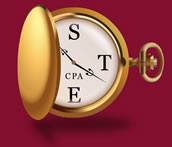
People frequently ask me how much money they’ll need to retire, as if there’s a one-size-fits-all dollar amount.
They tell me $1 million is the number they hear most often, but sometimes it’s $2 million or more.
tell them they’re asking the wrong question.
Instead of starting with how much they should have saved for retirement, I want to know how much they expect to spend.
After all, if you have $1 million in your nest egg and you need $5,000 a month to cover your expenses, that’s a lot different than if you need $10,000 every month.
The problem is, few people have a clear grasp of what their actual costs are. Even some of my most conscientious friends and clients — the ones who have done everything right when it comes to saving and investing, and who know exactly how much they have in every account and asset class — are winging it when it comes to their expenses. They didn’t work from a budget when they were 20, and they aren’t doing it at 60. As long as they’re bringing in more money than they need every month, they don’t feel the need to actually track where it’s going.
And that’s OK (I guess) when you’re taking home a regular paycheck. But when you retire and you’re creating your own paycheck — supplemented by your retirement accounts — it’s critical to know how much you’re spending so you can avoid a shortfall in your income plan. If you expect to spend $6,000 a month, for example, and your guaranteed income streams in retirement (Social Security, pensions, etc.) only come to $4,000, we have to find a way to help close that gap.
It’s also important to avoid withdrawing far more than you need.
We send clients home with a basic worksheet they can use to track their spending and get a better idea of what they may need in retirement. It breaks things down into a few categories:
1. Household expenses
This might include such costs as a mortgage, real estate taxes and homeowners insurance. We keep these amounts separate because a mortgage payment isn’t going to go up with inflation, but taxes and insurance will. And you may pay off your mortgage at some point before or in retirement, but you’ll still have taxes and insurance on the home. This category also includes utilities and other basic home costs, such as maintenance and repairs.
2. Daily living expenses
These costs include food, whether it’s groceries or dining out; transportation; clothing; personal care, such as haircuts and hygiene products; and health care expenses, including insurance, prescriptions and doctor visits. Again, these are costs that could change in retirement, and that should be taken into consideration. How will health costs differ when you move to Medicare? Will you pay off your car or buy a new one? Will your clothing costs drop when you no longer need a work wardrobe?
3. Debts and obligations
Dumping your debt before you retire is a good goal, but the reality is we see a lot of people who still have credit card bills, or they’re paying off student loans they took out for their kids. If that’s the case, a plan can include a strategy to pay them down.
4. Entertainment
A lot of people say they want to travel more in retirement, and for some, that’s an extra $1,000 or $2,000 a month that should be factored into their costs. The same goes for golfing, boating and other hobbies.
5. Miscellaneous
This category is a catch-all. We find many people use it to budget for gifts for their kids and grandkids — maybe $100 or $200 a month. Charitable donations also go here.
As you can see, this exercise isn’t meant to tell people how to spend their money. It’s designed to figure out how much money they’ll need their portfolio to generate to cover the costs they have. It isn’t about restrictions; it’s about reality.
Recently, a new client guessed on an intake sheet that her costs would come in at $6,000 a month. As it turned out, they were closer to $8,500. She called it “eye opening.”
We hear that a lot.
Another thing we hear from clients is that they want to maintain their current standard of living when they’re in retirement. They don’t want things to change. And expense tracking can help us understand what that looks like for each individual and couple.
When you’re still working and accumulating a nest egg, most financial professionals will start by assessing your risk tolerance, find an appropriate portfolio to match that risk tolerance and then invest your assets. But when you’re ready to retire, it takes a different mindset, focusing first on cash flow. Then, instead of shooting for a random dollar amount, you and your adviser can build a plan that’s based on your wants and needs.


Leave A Comment